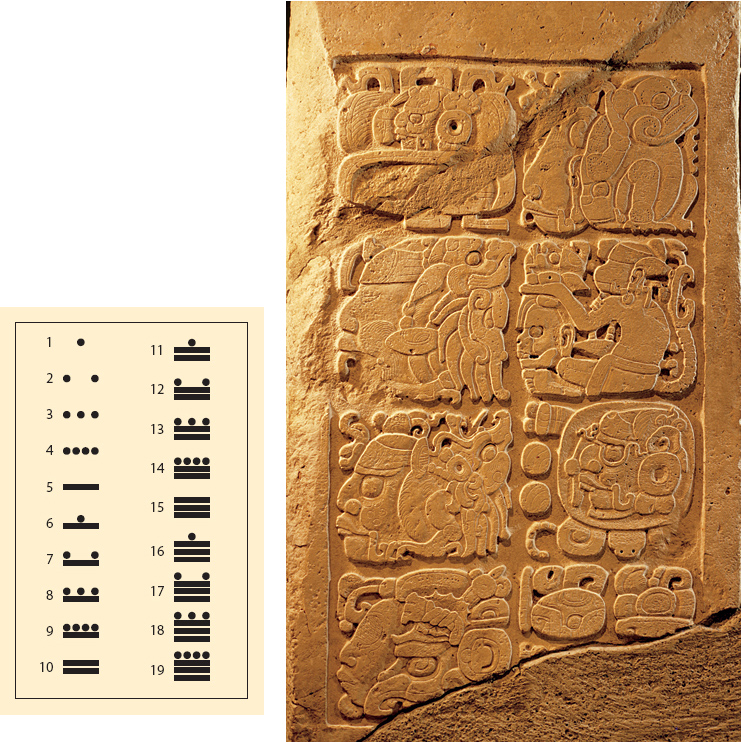A History of World Societies:
Printed Page 311
A History of World Societies Value
Edition: Printed Page 309
Maya Science and Religion
The Maya developed the most complex writing system in the Americas, a script with nearly a thousand glyphs. They recorded important events and observations in books made of bark paper and deerskin, on pottery, on stone pillars called steles, and on temples and other buildings. Archaeologists and anthropologists have demonstrated that the inscriptions are historical documents that record major events in the lives of Maya kings and nobles. As was common for elites everywhere, Maya leaders stressed the ancient ancestry of their families. “In the year 3114 B.C.E. my forefathers were present, during the Creation of the World,” reads one stele in the city of Tikal, recording the lineage of the Maya lord Kan Boar. 2
Learning about Maya religion through written records is difficult. In the sixteenth century Spanish religious authorities viewed Maya books as demonic and ordered them destroyed. Only a handful survived, offering a window into religious rituals and practices, as well as Maya astronomy. (See “Viewpoints 11.1: Creation in the Popol Vuh and in Okanogan Tradition.”) From observation of the earth’s movements around the sun, the Maya used a calendar of eighteen 20-
Using a system of bars, where a single bar equals five (— = 5) and a single dot equals one (• = 1), the Maya devised a form of mathematics based on the vigesimal (20) rather than the decimal (10) system. More unusual was their use of the number zero, which allows for more complex calculations than are possible in number systems without it. The zero may have actually been discovered by the Olmecs, who used it in figuring their calendar, but the Maya used it mathematically as well. The Maya’s proficiency with numbers made them masters of abstract knowledge — notably in astronomy and mathematics.

Between the eighth and tenth centuries the Maya abandoned their cultural and ceremonial centers. Archaeologists attribute their decline to a combination of agricultural failures due to drought, land exhaustion, overpopulation, disease, and constant wars fought for economic and political gain. These wars brought widespread destruction, which aggravated agricultural problems. Royalty also suffered from the decline in Maya civilization: just as in good times kings attributed moral authority and prosperity to themselves, so in bad times, when military, economic, and social conditions deteriorated, their subjects saw the kings as the cause and turned against them.
Decline did not mean disappearance. The Maya ceased building monumental architecture around 900 C.E., which likely marked the end of the era of rule by powerful kings who could mobilize the labor required to build it. The Maya persisted in farming communities, a pattern of settlement that helped preserve their culture and language in the face of external pressures. They resisted invasions from warring Aztec armies by dispersing from their towns and villages and residing in their milpas during invasions. When Aztec armies entered the Yucatán, communities vanished, leaving Aztec armies with nothing to conquer. This tactic continued to serve the Maya under Spanish colonial rule. Though Spaniards claimed the Yucatán, the Maya continued to use the strategy that had served them so well in resisting the Aztecs. Many communities avoided Spanish domination for generations. The last independent Maya kingdom succumbed only in 1697, and resistance continued well into the nineteenth century.